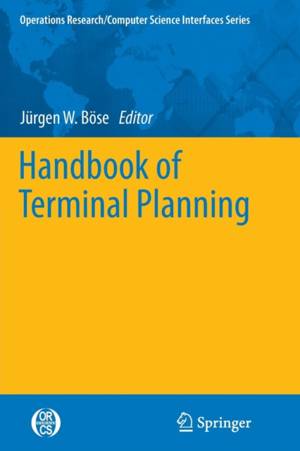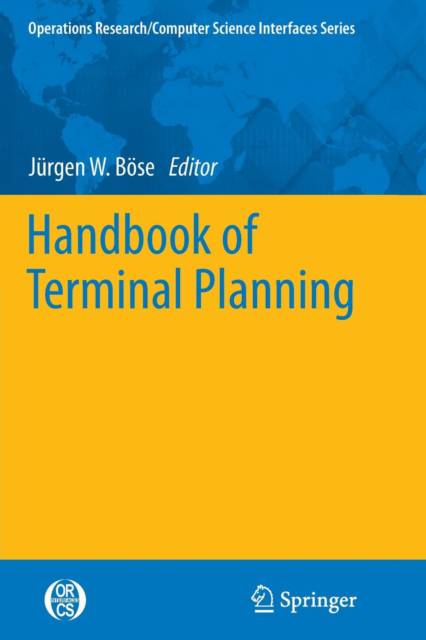
- Retrait gratuit dans votre magasin Club
- 7.000.000 titres dans notre catalogue
- Payer en toute sécurité
- Toujours un magasin près de chez vous
- Retrait gratuit dans votre magasin Club
- 7.000.0000 titres dans notre catalogue
- Payer en toute sécurité
- Toujours un magasin près de chez vous
Handbook of Terminal Planning
251,45 €
+ 502 points
Description
Container Terminals (CT) operate as central nodes in worldwide hub-and-spoke networks and link ocean-going vessels with smaller feeder vessels as well as with inbound and outbound hinterland transportation systems using road, rail, or inland waterways. The volume of transcontinental container flows has gained appreciably over the last five decades -- throughput figures of CT reached new records, frequently with double-digit annual growth rates. Stimulated by throughput requirements and stronger competition between terminals settled in the same region or serving a similar hinterland, respectively, cost efficiency and throughput capabilities become more and more important. Nowadays, both terminal capacity and costs have to be regarded as key indicators for CT competitiveness. In respect of this steady growth, this handbook focuses on planning activities being aimed at "order of magnitude improvements" in terminal performance and economic viability. On the one hand the book is intended to provide readership with technological and organizational CT basics for strategic planning. On the other hand this book offers methodical assistance for fundamental dimensioning of CT in terms of 'technique', 'organization' or 'man'. The former primarily considers comprehensive information about container handling technologies representing the state of the art for present terminal operations, while the latter refers to methodological support comprising in particular quantitative solutions and modeling techniques for strategic terminal decisions as well as straightforward design guidelines. The handbook includes an introductory contribution which gives an overview of strategic planning problems at CT and introduces the contributions of the volume with regard to their relationship in this field. Moreover, each paper contains a section or paragraph that describes the impact of findings investigated by the author(s) for problem-solving in long-term planning of CT (as an application domain). The handbook intends to provide solutions and insights that are valuable for both practitioners in industry who need effective planning approaches to overcome problems and weaknesses in terminal design/development and researchers who would like to inform themselves about the state of the art in methodology of strategic terminal planning or be inspired by new ideas. That is to say, the handbook is addressed to terminal planners in practice as well as to students of maritime courses of study and (application oriented) researchers in the maritime field.
Spécifications
Parties prenantes
- Editeur:
Contenu
- Nombre de pages :
- 433
- Langue:
- Anglais
- Collection :
- Tome:
- n° 49
Caractéristiques
- EAN:
- 9781461428213
- Date de parution :
- 20-04-13
- Format:
- Livre broché
- Format numérique:
- Trade paperback (VS)
- Dimensions :
- 156 mm x 234 mm
- Poids :
- 635 g

Les avis
Nous publions uniquement les avis qui respectent les conditions requises. Consultez nos conditions pour les avis.





